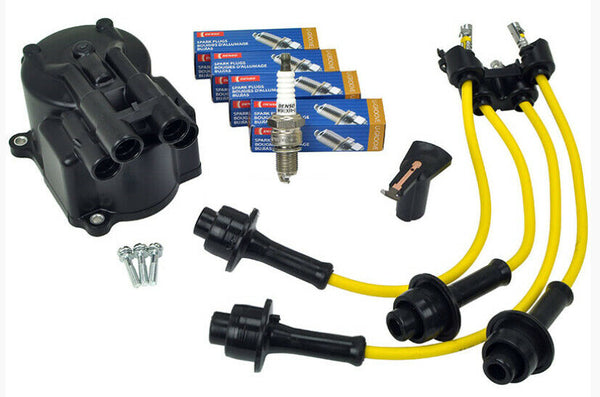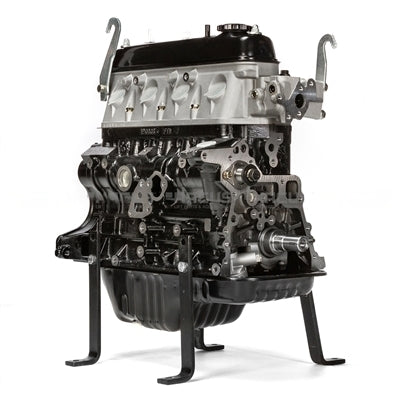The History and Evolution of the 4Y Engine in Automotive Engineering
Discovering the Various Kinds Of Engine: Which One Fits Your Requirements?
In the pursuit to establish the most appropriate engine kind for your details requirements, it is crucial to evaluate the distinctive attributes and advantages of each alternative available. Internal burning engines continue to dominate as a result of their integrity, while electrical engines are obtaining grip for their sustainability. Crossbreed engines supply a functional concession, and diesel motor attract attention for their power sought after applications. In addition, alternate gas engines present ingenious services, albeit with certain limitations. Understanding your top priorities will certainly contribute in this decision-making procedure, causing an exploration of factors that might affect your option.

Interior Combustion Engines
Inner burning engines (ICEs) are the backbone of modern transportation, powering a vast selection of automobiles from automobiles to airplanes. These engines run on the concept of converting gas into mechanical power with a series of regulated surges within a burning chamber. The most usual kinds of ICEs consist of gasoline engines, diesel motor, and rotary engines, each developed to meet certain performance and effectiveness needs.
Gas engines generally utilize trigger ignition, while diesel engines count on compression ignition, leading to distinctive differences in gas effectiveness and power output (4y engine). Rotating engines, or Wankel engines, offer a small layout and smooth operation, however are much less commonly used in mainstream applications
ICEs have actually gone through considerable advancements in modern technology, including the intro of turbocharging and gas injection systems, which improve total efficiency and efficiency. Regardless of their efficiency enhancements, ICEs encounter increasing scrutiny because of their ecological effect, especially regarding greenhouse gas emissions. As the vehicle sector advances, the future of ICEs stays a subject of debate, balancing performance, effectiveness, and environmental factors to consider. However, they proceed to play a critical role in global transportation infrastructure.
Electric Engines
As concerns about ecological sustainability and fossil gas reliance grow, electric engines have arised as an engaging option to interior combustion engines. These engines utilize electrical motors powered by batteries or fuel cells, offering a cleaner and much more effective motive powers.
Among the main advantages of electrical engines is their lowered discharges. Unlike standard engines that shed fossil gas, electric engines produce absolutely no tailpipe discharges, dramatically reducing air pollution and adding to improved public health. In addition, the effectiveness of electric motors often goes beyond that of interior combustion engines, transforming a higher proportion of power from the source of power right into functional energy for activity.
Electric engines are likewise noteworthy for their silent operation, making them perfect for city atmospheres. 4y engine. The simpleness of their style causes fewer relocating parts, which can cause reduced maintenance costs and boosted reliability over time
However, difficulties remain, including battery production influences, charging facilities, and array limitations. In spite of these hurdles, the expanding investment in electrical vehicle innovation and renewable resource sources points towards an appealing future for electrical engines, placed to play a vital duty in the transition toward lasting transport.
Hybrid Engines
Blending the advantages of both conventional and electric interior burning engines, hybrid engines stand for a versatile service in the mission for reliable and lasting transport. These engines combine a gas or diesel engine with an electrical motor, permitting boosted gas efficiency and minimized exhausts contrasted to conventional vehicles.
Hybrid engines operate in a number of modes, using the electric motor for low-speed driving and the interior combustion engine for higher speeds or when more power is needed. This dynamic operation not only improves fuel economic climate however additionally adds to a smoother driving experience. Regenerative braking is one more vital feature, capturing energy generally shed throughout stopping and redirecting it to charge the battery.

As customers significantly prioritize eco-friendliness, hybrid engines stand out as a sensible choice, using an effective equilibrium of performance, efficiency, and ecological obligation. This flexibility makes them ideal for metropolitan commuting and long-distance traveling alike.
Diesel Engines
Performance and power are trademarks of diesel motor, which have actually long been favored for their effectiveness and gas economy. These engines operate on the principle of compression ignition, where air is pressed to a high temperature before fuel is infused, igniting it without the requirement for spark plugs. This procedure enables diesel motor to achieve greater thermal efficiency compared to fuel engines, equating right into much better fuel gas mileage and reduced carbon dioxide exhausts.
Diesel motor are especially fit for heavy-duty applications such as trucks, buses, and commercial equipment, where torque and resilience are vital. Their layout generally includes more powerful parts to hold up against the higher pressures produced throughout procedure, causing longer solution life and reduced upkeep prices.

Alternative Gas Engines
While diesel motor have lengthy dominated the landscape of durable power resources, alternate fuel engines are acquiring traction as sensible alternatives for a much more sustainable future. These engines use a variety of gas, such as compressed gas (CNG), hydrogen, gas, and ethanol, aiming to reduce greenhouse gas exhausts and reliance on nonrenewable fuel sources.
One substantial advantage of different fuel engines is their possible to reduced carbon footprints. CNG engines give off less contaminants contrasted to standard diesel engines, making them suitable for metropolitan transit systems and fleets seeking to boost air high quality. Ethanol, originated from biomass, not only minimizes exhausts however additionally supports farming economies.
Hydrogen gas cells stand for a sophisticated advancement in this realm, supplying zero-emission find out this here power through a chemical response between hydrogen and oxygen. Nevertheless, obstacles such as infrastructure advancement and manufacturing costs remain challenges to prevalent adoption - 4y engine.
Final Thought
Interior combustion engines provide reliability, while electric engines focus on sustainability and lowered upkeep. Crossbreed engines incorporate the benefits of both, improving effectiveness, whereas diesel engines offer remarkable power and torque for durable applications.
Hybrid engines provide a versatile compromise, and diesel engines stand out for their power in requiring applications. The most typical types of ICEs include fuel engines, diesel engines, and rotating engines, each developed to meet details performance and efficiency needs.
Unlike typical engines that shed fossil fuels, electrical engines create zero tailpipe exhausts, significantly reducing air contamination and contributing to enhanced public health and wellness.Crossbreed engines run in several modes, utilizing the electric motor for low-speed driving and the interior combustion engine for greater rates or when more power is required. Hybrid engines incorporate the advantages of both, enhancing performance, whereas diesel engines offer superior power and torque for sturdy applications.